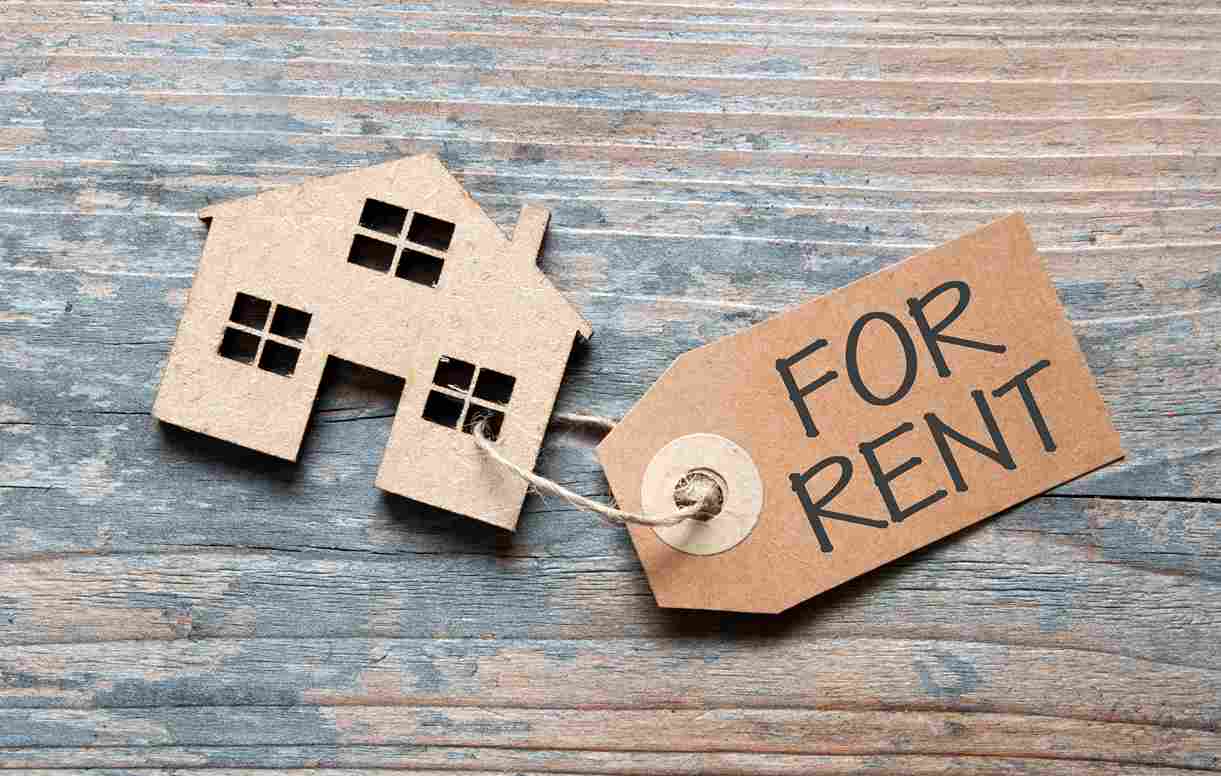
Table of Contents
- What does rent-to-own mean?
- Types of rent-to-own agreements
- How rent-to-own works
- What is included in a rent-to-own contract?
- Things a tenant should consider before signing a lease purchase
- Pros and cons of rent-to-own for the tenant
- Pros and cons of rent-to-own for the landlord
- Repair and maintenance responsibilities
- Rent-to-own summary
What does rent-to-own mean?
Renting-to-own is a legal contract between a landlord and a tenant in which the tenant agrees to purchase the property, usually at the end of the lease. It is a good opportunity for aspiring homebuyers with poor credit scores or little money for a down payment.
The tenant will pay a rental premium or additional fee for the right to buy the home following the Lease Agreement. The homeowner will set aside a portion of the monthly rent payment to contribute to a down payment.
Although rent-to-own is a good option for tenants with a poor financial history, there are other options for landlords looking to rent to a tenant with bad credit.
Types of rent-to-own agreements
There are two types of agreements:
- A lease purchase communicates that the buyer is legally obligated to purchase the property at the end of the lease.
- A lease option gives the buyer the right to buy the property at the end of their lease term without the contractual obligation.
| Lease purchase | Lease option | |
| Purchase agreement | Obligation to buy | Option to buy |
| Maintenance obligation | Typically the tenant | Typically the landlord |
| Risk | If the tenant forfeits the purchase, they may lose their deposit and rent credits. | If the tenant rejects the purchase, they may lose the option fee. |
The terms rent to own and option to purchase are sometimes used interchangeably, so regardless of what you call it, both the seller and the buyer should be clear about the nature of the contract before signing it. In particular, the buyer should know the terms and conditions so they do not mistakenly agree to buy the home when the lease ends.
How rent-to-own works
A rent-to-own agreement can work in two ways:
- The tenant may pay an option fee. An option fee is an upfront, nonrefundable deposit that is usually a percentage of the home’s purchase price.
- The tenant may pay rent credits or rent premiums each month. Rent credits are extra money spent on top of rent to help lower the house's down payment.
During the tenancy, the homeowner should put payment premiums into an escrow account to act as a down payment. Once the tenant’s Lease Agreement expires or when the tenant exercises the option to purchase before the expiration of the lease, a Real Estate Purchase Agreement can outline the terms and conditions for the sale of the property.
It’s important to note that the tenant must fulfill any conditions before finalizing the purchase, such as getting approved for a mortgage through a bank or lender. The rent-to-own period may allow the tenant to improve their credit score if that inhibits them from acquiring a mortgage. However, the agreement is still subject to financing, and the buyer may face repercussions if they cannot get approved for a mortgage.
| If the buyer can’t obtain financing but still wishes to buy the property, the seller may be more comfortable facilitating the purchase with a Land Contract. A Land Contract allows the seller to retain the property title until the home is paid in full. The buyer may continue to reside at the property while making monthly payments (with interest) toward the purchase. Once the buyer pays off the house, the seller can use a Warranty Deed to transfer the title to the new owner. |
What is included in a rent-to-own contract?
A rent-to-own transaction will have two agreements, including:
- A Lease Agreement is the agreement between the tenant and landlord regarding the terms, conditions, and payment for the rental period. This agreement should also include any rent credits that will be paid monthly.
- A Purchase Agreement is the portion of the contract that addresses the tenant's option or agreement to purchase the home.
LawDepot offers step-by-step questionnaires and tailored documents for both the Lease Agreement and Purchase Agreement. Additional information included for a rent-to-own contract may consist of:
- Length or term of the lease: This typically spans from two to five years on average.
- Purchase price: A market appraisal usually determines the home sale price.
- Option fee: A nonrefundable fee in exchange for the right or option to buy. This is usually 2-7% of the property value.
- Option deposit: The tenant may pay a refundable deposit toward the home purchase.
- Rent: The rental amount will typically be the monthly rent plus the rent credit.
- Additional information: Include who is responsible for utilities, repairs, insurance, property tax, and Homeowners’ Association fees.
LawDepot’s Lease Agreement includes an Option to Purchase section with the above information to customize the contract.
Things a tenant should consider before signing a lease purchase
It’s important to understand the terms and conditions of a lease purchase, as you contractually agree to buy the home once the lease agreement expires. There are some things you should consider before making any decisions:
- How long will the lease agreement last before you can buy the home?
- Are you confident you can get your credit score to a place where a lender will provide you with a mortgage?
- Are there any penalties if you miss a rent payment? Will you still be eligible to purchase the home?
- Who is responsible for repairs and maintenance?
- Can you extend the rental period if you’re unable to secure financing?
- Is the house in good condition?
Buyer tip: Avoid the risk of foreclosure by inquiring about the mortgage payment history before signing your lease agreement. You should also inquire about any liens against the property with a title company or at your county recorder’s office, as this can affect the transfer of title from the seller to the buyer.
Pros and cons of rent-to-own for the tenant
There can be a lot of challenges when trying to purchase a house, including saving a down payment or having a favorable credit score. Rent-to-own provides a new opportunity for those struggling to get approved for a mortgage. However, there are both advantages and disadvantages for a tenant-buyer, such as:
| Tenant-Buyer Pros | Tenant-Buyer Cons |
| It provides another way to save for a down payment | It is often more expensive than a traditional Lease Agreement, as the seller can charge more than the market rate to accumulate rent credits |
| It allows you to secure a home while you work on improving bad credit | You may be unable to exercise your option to purchase if you don’t qualify for financing at the end of the lease term |
| You can test out the neighborhood to decide whether it’s a good fit | You may forfeit your option fee and rent credits if you opt out of the purchase or can’t get approved for financing. |
| You agree to a set price at the beginning of the tenancy, so you can plan accordingly | If the home forecloses before you buy, you may lose the property |
| Most contracts will have the option to opt out of the purchase, though sometimes with penalties |
According to Pete Evering, who is in business development at Utopia Management San Diego, one of California's largest property management companies, “Rent-to-own isn’t entirely without merit. For some buyers, especially those who are confident they’ll qualify for a mortgage in the near future, it can be a useful stepping stone. Locking in a purchase price in a rising market can be a smart move, and the ability to test out a home and neighborhood before fully committing can offer peace of mind.”
| Buyer tip: Avoid the risk of foreclosure by inquiring about the mortgage payment history before signing your Lease Agreement. You should also inquire about any liens against the property with a title company or at your county recorder’s office, as this can affect the transfer of title from the seller to the buyer. |
Pros and cons of rent-to-own for the landlord
Rent-to-own is a good option for homeowners looking to sell their property. It opens up a new market that they otherwise may not have. However, there are advantages and disadvantages for a seller to enter into a rent-to-own contract, including:
| Landlord-Seller Pros | Landlord-Seller Cons |
| It can generate cash flow to offset your mortgage payments if you have difficulty selling in a slow market | The purchase price is fixed at the beginning of the agreement, so you may not increase it if there’s more market demand at the time of selling |
| You may be able to set a price above market value | You must find a new buyer if the tenant opts out of the purchase or cannot get a mortgage |
| It provides an additional stream of passive income and tax deductions | |
| Tenants may take better care of a home if they intend to purchase it at the end of their tenancy | |
| The landlord may keep the option fee if the tenant does not purchase the home or cannot get financing |
Repair and maintenance responsibilities
In traditional Lease Agreements, the landlord is often responsible for any repairs or maintenance. However, some rent-to-own agreements require the tenant-buyer to manage repairs and maintenance while living in the home.
Repair and maintenance responsibilities should be outlined in the agreement to ensure that all parties are clear about their duties.
Rent-to-own summary
Plenty of commentary about rent-to-own agreements acknowledges that they’re an unfavorable lease type for both the landlord and tenant. However, they can have some notable benefits if both parties are educated and mindful of the contract.
Levi Rodgers, Co-Founder at VA Loan Network, states, “My one big recommendation: get an attorney to review the contract beforehand. Terms like maintenance responsibilities, price lock-ins, and firm timelines are what make the difference between a savvy investment and an expensive mistake.”
LawDepot offers Free Legal Consultation to provide insight and information about rent-to-own contracts.





